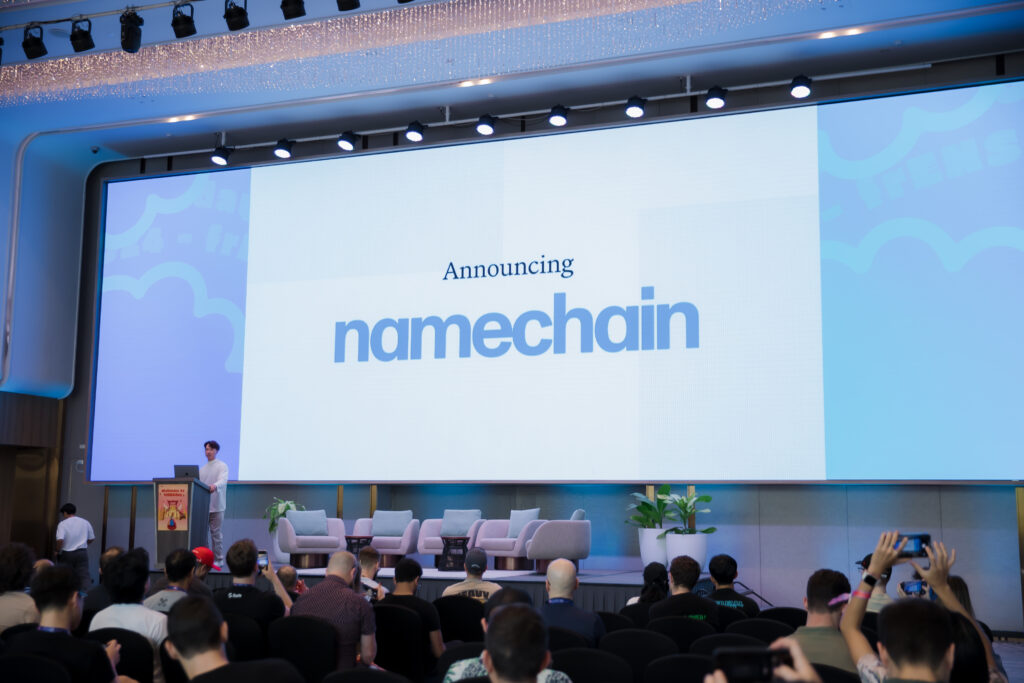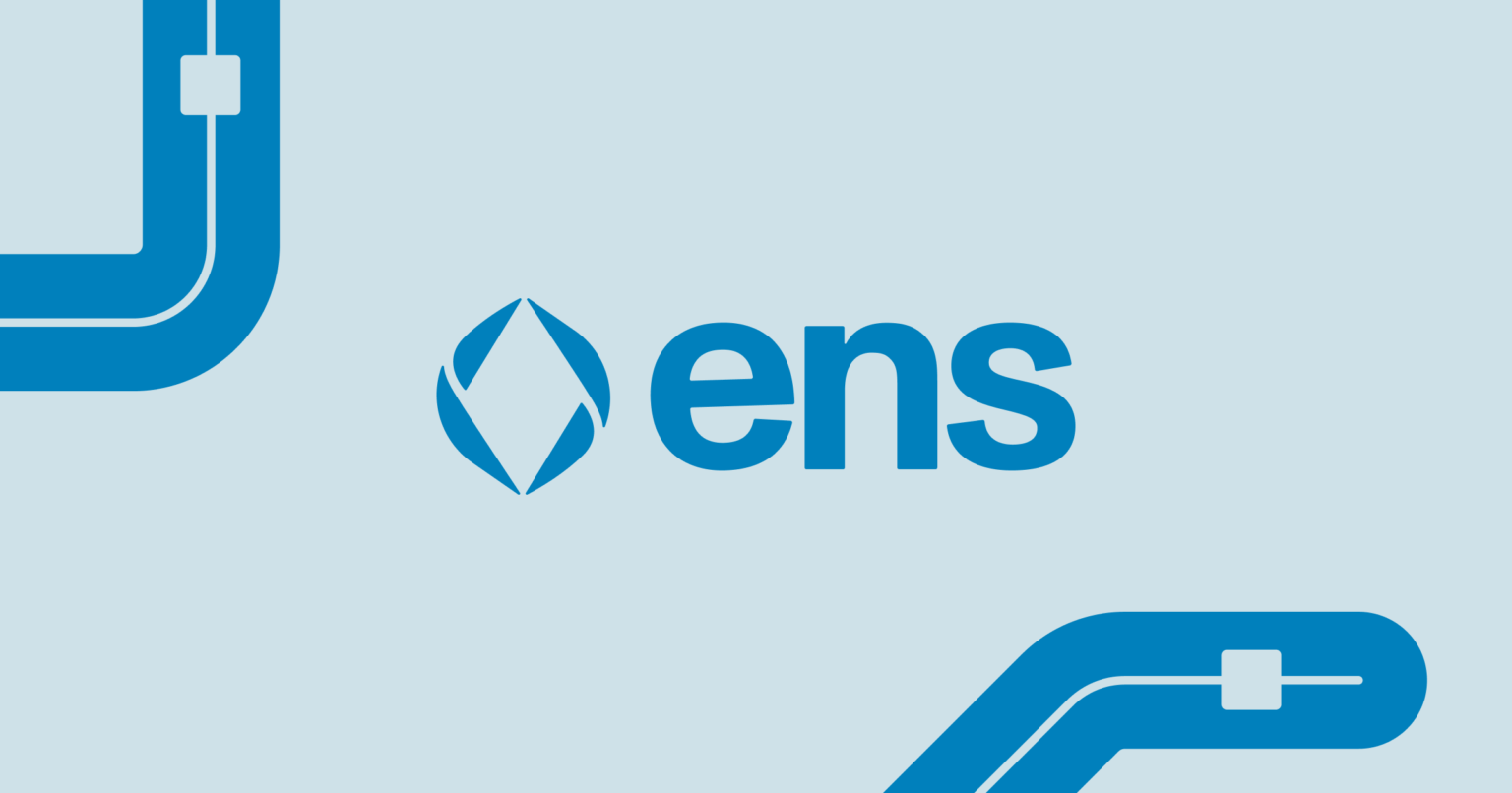Once upon a time, in Web3, we had to manually type every character when sending digital assets from one wallet address to another. Copy/paste was an option, but anyone who has ever accidentally sent assets to the wrong wallet will tell you that there’s always a bit of fear in that process.
Then, one day, this great new product called ENS came along. ENS, which stands for Ethereum Naming Service, is built on the Ethereum blockchain. It allowed users to purchase an NFT that was tied to an address. The user created an onchain domain, which was tied to the wallet that contained the NFT. Once the ENS was created, users could send and receive assets on Ethereum at that address using the ENS instead of the full 42-character wallet address.
As time has gone on, ENS has advanced into far more than just an onchain identity for your wallet. Many folks these days have an ENS. Other blockchains have also had naming services pop up for them as well. However, many folks don’t likely know the depth of what their ENS is capable of.
In order to learn more, I recently spoke with Wes, the Social Media Manager for ENS.
DepressiveHacks (DH): Thanks for taking the time. Let’s start with a basic background. What brought you into Web3, and how did you end up working for ENS (Ethereum Naming Service)?
From Miner to Marketer: Wes’s Web3 Journey
Wes: I’ve been into crypto since high school, actively trading through college. In 2018, during my time in college, I started mining Ethereum with a friend. After graduating, I took a job as an Internal Auditor, but I never left the space – I kept mining on the side, staying plugged into the evolving crypto landscape.
In 2021, my business partner kept pushing me to look into NFTs, but I brushed it off at first, not fully understanding the technology. Eventually, I gave in, and he walked me through different collections, how they were bought, sold, and valued. That led us to launch our first NFT project in early 2021, followed by another later that year with a group we connected with on CT (Crypto Twitter).
That period was a crash course in Web3 marketing, community growth, and product launches. I taught myself how to write ERC-721 minting smart contracts, helping other projects successfully launch their NFTs. Beyond just the technical side, I quickly learned how to build hype, foster engagement, and drive adoption – all skills that became invaluable in my later roles.
After a few months in the NFT space, I knew I wanted to transition into Web3 full-time. I started searching for opportunities and came across a job posting at Webacy, a Web3 security suite. Security has always been a major issue in crypto, so the role immediately caught my interest. I landed the position as the company’s second employee, stepping in as Head of Growth. Over the next two years, I led business development, marketing, outreach, and social strategy, helping scale Webacy from an early-stage startup to a recognized name in Web3 security.
One of my biggest strengths at Webacy was co-marketing and partnerships – I worked closely with other Web3 companies, aligning product launches and security initiatives to create high-impact campaigns. Whether it was joint marketing efforts, brand collaborations, or security awareness initiatives, I learned how to structure partnerships that actually drive value rather than just surface-level promotion.
Wanting to take my experience to a more established Web3 company, I started looking for my next move. Within a month, I landed my role as Head of Social at ENS, the most well-known Web3 identity company in the space. I’m excited to be part of ENS Labs, contributing to the team’s efforts in scaling the protocol, expanding ENS adoption, and pushing decentralized identity forward as Web3 continues to evolve.
ENS as Your Web3 Identity
DH: Most people know ENS as an easy way to send digital assets to an address without using full addresses, minimizing typos and the risk of sending assets to the wrong place. However, this is simply scratching the surface. Can you take us into how you view ENS and its capabilities? How would you explain it to a new Web3 user?
Wes: Most people recognize ENS as a way to simplify sending and receiving digital assets, eliminating long, complex wallet addresses and reducing the risk of errors. But that’s just the surface. ENS is far more than just a naming service; it’s your identity in Web3.
I like to think of an ENS name as the equivalent of a birth certificate in Web3. When you’re born, your birth certificate establishes your official identity. Similarly, in Web3, an ENS name represents your digital identity, allowing you to transact seamlessly while also serving as a persistent username across decentralized applications and social platforms. If Twitter (or any other platform) went down tomorrow, people would still know how to find me as ‘wesd.eth’ across Web3.
The power of ENS extends beyond just transactions. One of the most underappreciated features is subnames, which allow users to create structured identities under their main ENS name. For example, I use subnames for different wallets: a cold wallet, a hot wallet, and a degen wallet. Coming from a security background, this is something I’ve always valued, as it provides an extra layer of organization and protection against risks like address poisoning and other common crypto scams.
ENS also plays a critical role in Web3 infrastructure beyond personal identities. Companies use ENS to name smart contracts, designate wallets, and create human-readable namespaces for their communities. And for those concerned about privacy, solutions like Fluidkey allow users to generate unique subdomains for every transaction, ensuring their on-chain identity remains dynamic and difficult to track.
Ultimately, ENS is more than just a tool. I think ENS is your identity and reputation in Web3.
Scaling ENS Across Chains and Social Platforms
DH: Ethereum has had a lot of different L2s deployed recently. How does an ENS expand over L2s? What L2s are included with a traditional ENS? Are there any that an ENS wouldn’t work on?
Wes: ENS expands over L2s by allowing names to function seamlessly across multiple chains while keeping them resolvable on Ethereum. Right now, ENS operates natively on Ethereum Mainnet, but we’re actively integrating with L2s like Optimism, Base, Arbitrum, Starknet, and Polygon to reduce costs and improve scalability.

We do this using offchain resolvers and NameWrapper, which let users manage ENS names and subnames more efficiently on L2s. ENS works best on EVM-compatible chains, so it wouldn’t function the same way on non-EVM networks like Solana without significant modifications.
DH: Can you break down the subdomain ENS concept a bit? Is there any benefit in a subdomain ENS (for example, depressivehacks.base.eth) as compared to a traditional ENS (depressivehacks.eth)?
Wes: ENS subdomains, like depressivehacks.base.eth, offer a structured and cost-effective way to manage onchain identities while maintaining security and flexibility. Instead of relying on multiple ENS names, subdomains streamline wallet management:
- depressivehacks.eth → Main wallet
- vault.depressivehacks.eth → Cold storage
- mint.depressivehacks.eth → Hot wallet for degen plays
This setup enhances security by separating assets while keeping everything under one recognizable identity.
Beyond wallets, subdomains are useful for family, communities, and organizations. A family could use mike.smithfamily.eth and sally.smithfamily.eth, maintaining individual identities under one root. Businesses can do the same, structuring operations with subdomains like tx1.company.eth or team.company.eth, ensuring clear organization without needing separate ENS names.
For an L2 like Base, depressivehacks.base.eth benefits from lower gas fees and faster transactions, making subdomains an even more efficient way to manage identity in Web3.
DH: There has been more discussion recently of onchain social media, also known as socialfi. How do you see ENS playing a key role in social relationships going forward?
Wes: Oh yeah, SocialFi is definitely on the rise, and ENS is already playing a key role in onchain social platforms. Farcaster, for example, uses fnames, which function similarly to ENS names but are native to its protocol. However, ENS remains the most universal identity layer in Web3, recognized across multiple dApps, wallets, and social platforms.
Another key piece of the puzzle is the Ethereum Follow Protocol (EFP), an onchain social graph protocol for Ethereum accounts. It serves as a primitive of the Ethereum identity stack, complementing ENS and Sign-In With Ethereum (SIWE). EFP enables onchain following, meaning users can build verifiable, decentralized social connections directly tied to their ENS name and wallet.
ENS enhances this further by providing consistent, decentralized identities across SocialFi platforms like Farcaster, Lens, and future networks. If someone knows me as wesd.eth, they can find and interact with me seamlessly across different dApps without relying on a single centralized platform.
Additionally, ENS subdomains create structured identities for communities, brands, and individuals. A brand could issue mod.brand.eth, or a family could have john.doe.eth, ensuring an organized, verifiable presence in onchain social networks.
As SocialFi continues to grow, ENS will be a key foundation for identity and reputation, while EFP will help define how users connect and interact onchain – together, they’re shaping the future of decentralized social networking.
Security, Simplicity, and Real Use Cases

DH: You have a background in the Web3 security space. How do you see ENS tying into helping users be more secure onchain?
Wes: ENS plays a crucial role in onchain security by reducing human error and improving identity verification. One of the biggest risks in Web3 is address confusion—copy-pasting long wallet addresses increases the chance of typos, phishing attacks, and address poisoning scams. ENS eliminates this by replacing complex addresses with human-readable names, ensuring transactions go to the right place.
Subdomains add another layer of security. I personally use them to segment wallets—for example:
- depressivehacks.eth → Main wallet
- vault.depressivehacks.eth → Cold storage
- mint.depressivehacks.eth → Hot wallet for degen plays
This setup minimizes exposure and limits risk if one wallet is compromised.
ENS also helps users verify identities in onchain social networks and business transactions. Instead of trusting random addresses, users can transact with verified ENS names, reducing impersonation risks.
As the space evolves, ENS will continue to be a core identity layer that enhances security through clarity, verification, and structured wallet management – helping users stay safer onchain.
What’s Next for ENS and Web3
DH: What types of developments are coming down the pipeline for ENS? How can users who have subscribed for their ENS for multiple years expect the value of that initial subscription to evolve going forward?
Wes: ENS is continuously evolving alongside the broader Web3 ecosystem. Every day, more people are onboarding into Web3 and securing the ENS names they want, reinforcing ENS as the standard for decentralized identity. As Web3 scales, ENS scales with it – adapting to new technologies, integrations, and use cases.

One of the biggest developments on the horizon is Namechain, which will play a key role in expanding ENS’s capabilities. While details are still emerging, Namechain is expected to enhance ENS’s scalability, efficiency, and usability, ensuring that ENS remains the most reliable and accessible identity layer in Web3.
For users who have subscribed for multiple years, the value of that initial commitment continues to grow. As ENS adoption increases and more platforms integrate it, owning a well-established ENS name becomes even more valuable – not just as a Web3 identity, but as a key to reputation, social connections, and interoperability across decentralized networks.
DH: Many people have an ENS and likely haven’t explored the full capabilities of it. Where is a good place to start to learn more about what you can do with your ENS?
Wes: A great starting point is the ENS Docs and ENS Manager App, where users can explore features like setting their primary ENS name, updating records, and configuring subdomains. Beyond that, ENS has been integrated into platforms like Farcaster, Lens, and XMTP, showing how it can be used for decentralized social identity and messaging. Following ENS on X/Twitter, joining the ENS Discord, and engaging with the community is also a great way to stay informed about new developments and use cases.
DH: How do you reach more users and properly articulate the technological complexity of ENS in a palatable format?
Wes: ENS is more than just names – it’s an evolving decentralized identity protocol that maps human-readable names to wallets, smart contracts, and onchain data. As the tech advances, so does ENS, with innovations like Namechain, offchain resolvers, and L2 integrations improving scalability and usability.
To bridge the complexity, we focus on real-world applications – how ENS prevents transaction errors, enables secure identity management, and integrates across Web3. Storytelling, interactive guides, and visual content simplify the message, ensuring ENS is understood as a tool that makes Web3 more seamless, secure, and accessible as the ecosystem grows.
DH: Finally, where do you see Web3 heading more broadly through 2025 and beyond? What has you excited about the future direction of the industry as a whole?
Wes: Web3 is scaling fast, with L2 adoption, decentralized identity, and interoperability pushing the space toward real-world adoption. ENS is evolving with it, with developments like Namechain ensuring decentralized identity remains a core part of this growth. Onchain reputation, social networks, and frictionless integrations across DeFi, SocialFi, and gaming are shaping how people interact in digital spaces.
On the gaming side, I’d love to see Web3 gaming finally evolve past speculation and focus on real player-driven economies. The idea of true asset ownership in games has massive potential, but it needs better execution. When blockchain becomes a seamless part of gaming rather than a gimmick, that’s when things will get interesting.
Beyond digital applications, I think Web3 has room to connect more naturally with physical assets and ecosystems. I have three horses, and it’s fascinating to consider how blockchain could eventually integrate with animals, land, agriculture, and real-world industries in a way that actually makes sense. But what happens when we see onchain innovation applied to real-world assets, things like tracking provenance for high-value items, verifying ownership of physical collectibles, streamlining land and property rights, or even managing supply chains in a more transparent way? The next few years will be about bridging the gap between onchain and real-world value, and that’s what excites me the most.




